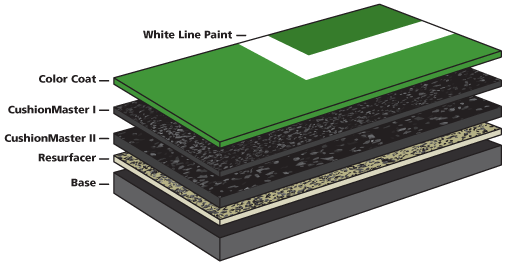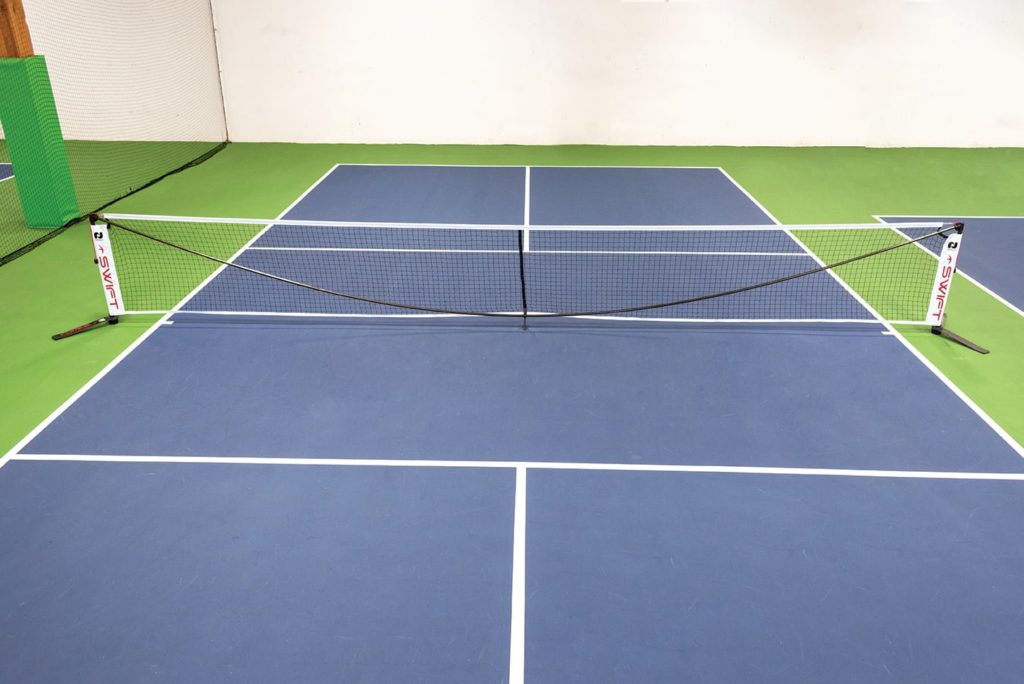Indoor and Outdoor Pickleball Court Construction Providers
Indoor and Outdoor Pickleball Court Construction Providers
Blog Article
Sustainable Practices in Pickleball Court Construction You Must Know
As the appeal of pickleball continues to climb, so also does the need for lasting practices in court building and construction. The effect of these techniques expands far past the court itself.
Picking Eco-Friendly Materials
Selecting environmentally friendly materials is a critical step in the building and construction of lasting pickleball courts. The choice of sustainable materials not just lessens environmental influence yet also boosts the durability and efficiency of the court. Trick materials consist of recycled rubber for the surface, which provides superb durability and shock absorption while diverting waste from land fills.
In addition, making use of locally sourced products decreases transportation discharges and supports regional economic situations. Pickleball court construction. As an example, making use of indigenous woods for fencing and seats can provide a lasting visual while making sure strength versus the components.
Incorporating absorptive materials for court foundations can further add to sustainability by permitting for natural water drainage and minimizing overflow. These selections not just protect neighborhood ecosystems yet also advertise healthier play settings.
Efficient Drainage Solutions
While the selection of environmentally friendly materials is essential, applying efficient drain remedies is equally vital for maintaining sustainable pickleball courts. Appropriate drainage not only secures the court surface from water damage but additionally reduces erosion and overflow, promoting environmental stability.
Reliable drainage systems can include absorptive paving, which permits water to penetrate the ground as opposed to merging on the surface. This decreases the chance of standing water, which can lead to mold and mildew and other maintenance concerns. Additionally, integrating tactically placed water drainage channels and swales can route excess water away from the court location, ensuring a dry playing surface area and preventing soil disintegration.
Making use of indigenous plant life in the landscaping around the courts can additionally improve water drainage by absorbing excess water and reducing runoff. These plants require less watering and advertise biodiversity, lining up with sustainable methods.
Additionally, it is vital to regularly maintain the water drainage system to ensure its long-term performance. This consists of clearing particles and surveillance for blockages. By focusing on effective water drainage services, pickleball court contractors can significantly add to the sustainability and longevity of the center, inevitably benefiting both gamers and the setting.
Energy-Efficient Lighting Options
As the demand for pickleball remains to expand, incorporating energy-efficient lighting choices right into court layout has ended up being significantly essential for sustainability. Standard lights systems often take in too much power, adding to greater functional costs and environmental effect. Consequently, adopting modern, energy-efficient technologies is crucial for both brand-new buildings and improvements.
LED (Light Emitting Diode) illumination sticks out as a leading selection as a result of its durability and energy cost savings (Pickleball court construction). Compared to conventional lights, LEDs utilize around 75% less energy and can last approximately 25 times longer, considerably decreasing maintenance costs. The directional nature of LED illumination reduces light pollution, making certain that illumination is focused on the court rather than surrounding areas.

Lasting Surface Area Alternatives
Checking out lasting surface area alternatives for pickleball courts has actually gained grip amongst gamers and home builders alike. The focus on environment-friendly products not just straightens with the growing ecological awareness yet additionally boosts the efficiency and longevity of the courts.
This material provides superb shock absorption, minimizing the danger of injuries for players while promoting sustainability. These floor tiles are simple to replace and mount, and their flexibility allows for various court configurations.
All-natural lawn courts are also becoming a sustainable selection, promoting biodiversity and lowering the heat island effect. They require regular maintenance and water, which may not line up with all sustainability objectives.

Water Preservation Strategies

Another reliable strategy entails the my blog installment of rain harvesting systems. These systems collect and save rainwater for usage in maintaining court surface areas and landscaping. This technique not only preserves potable water yet also reduces dependence on municipal resources.
Moreover, utilizing drought-resistant landscape design around the courts is crucial. Indigenous plants require less water and are much better adapted to regional environment conditions, therefore decreasing overall water intake. Additionally, using effective watering systems, such as drip irrigation, makes sure that water is delivered straight to plant roots, lessening dissipation and waste.
Conclusion
Integrating lasting practices in pickleball court building dramatically contributes to environmental preservation and source performance. Making use of environmentally friendly materials, carrying out efficient drain options, and embracing energy-efficient lights choices can considerably minimize environmental impact. Additionally, discovering lasting surface alternatives and employing water preservation methods improve the overall sustainability of these entertainment centers - Pickleball court construction. By focusing on these practices, the building and construction of pickleball courts can line up with broader ecological goals while advertising durability and capability within neighborhoods.
As the appeal of pickleball continues to rise, so as well does the demand for lasting practices in court building.Selecting green products is an important action in the building and construction of sustainable pickleball courts. By prioritizing energy-efficient lights alternatives, pickleball court producers can add to a more sustainable future while meeting the needs of gamers and stakeholders alike.Including sustainable surface options not only enhances the performance of pickleball courts yet also paves the method for applying efficient water conservation techniques.Incorporating lasting methods in pickleball court construction significantly adds to ecological preservation and source effectiveness.
Report this page